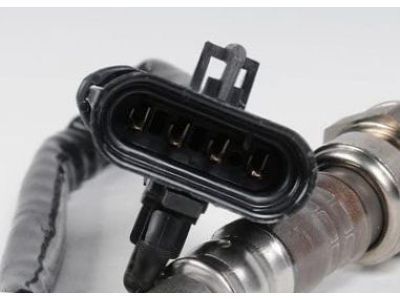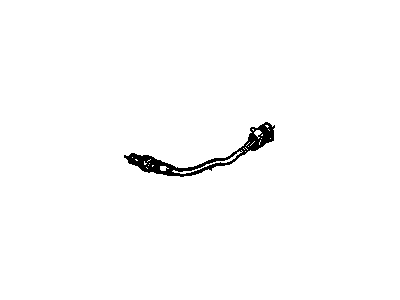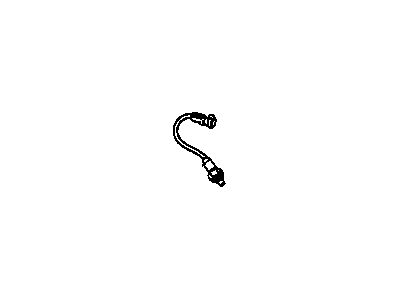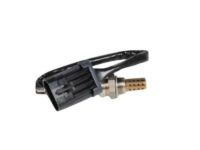
My Garage
My Account
Cart
Genuine Chevrolet Beretta Oxygen Sensor
Oxygen O2 Sensor- Select Vehicle by Model
- Select Vehicle by VIN
Select Vehicle by Model
orMake
Model
Year
Select Vehicle by VIN
For the most accurate results, select vehicle by your VIN (Vehicle Identification Number).
2 Oxygen Sensors found
Chevrolet Beretta Sensor Asm,Heated Oxygen
Part Number: 19178930$66.12 MSRP: $134.88You Save: $68.76 (51%)Ships in 1-2 Business DaysChevrolet Beretta Sensor,Exhaust Oxygen
Part Number: 19211437$18.91 MSRP: $33.92You Save: $15.01 (45%)
Chevrolet Beretta Oxygen Sensor
In this article, focuses on the Oxygen Sensor used in Chevrolet Beretta cars, Its main function is to measure the percentage of oxygen that is not combusted in the exhaust as this will help in the regulation of the air-fuel mixture as well as control of emissions. With reference to oxygen content, the sensor gives feedback to the engine control computer to put in the right pulse width in the fuel injector to achieve the optimal combustion. Chevrolet Beretta models usually use zirconium dioxide oxygen sensors and these may be of the narrow band or the wide band type. The narrow-band sensors produce voltage signal that oscillates between rich and lean condition while the wide-band sensors have much larger range that allows for better measurement of air-fuel ratio. In due course, change of various contaminants may undermine the efficiency of these sensors thereby resulting in higher emission rate coupled with substandard fuel consumption rates. The Oxygen Sensor should also be checked and serviced frequently so as to enhance the performance of Chevrolet Beretta cars.
Each OEM Chevrolet Beretta Oxygen Sensor we offer is competitively priced and comes with the assurance of the manufacturer's warranty for the part. Furthermore, we guarantee the speedy delivery of your orders right to your doorstep. Our hassle-free return policy is also in place for your peace of mind.
Chevrolet Beretta Oxygen Sensor Parts Questions & Experts Answers
- Q: What is the function and importance of the oxygen sensor in the exhaust system on Chevrolet Beretta?A:The oxygen sensor is mounted in the exhaust manifold and its function is to measure the oxygen content of the exhaust gas stream and to produce an output voltage in the range 0.1 volt to 0.9 volts where a low voltage corresponds to a high oxygen concentration, or rich mixture, to a low voltage corresponding to a low oxygen concentration, lean mixture. The ECM uses this variable voltage to adjust the particulars of the fuel-to-air mixture with an ideal balance of 14.7 air to 1 fuel in order to obtain the least exhaust emission and optimized Catalytic Converter functioning. The sensor does not generate voltage below the typical operating temperature of about 600-degrees F, so the ECM runs in open-loop during warm-up. If the engine stays normal temperature and the sensor provides a constant voltage of 0.35 to 0.55 volt, and the TPS shows it is not at idle a Code 13 is stored. A failure to operate for two minutes or more or low voltage or short circuit produces the Code 44, while a high voltage signal produces the Code 45. In these case the ECM drops out to a preset value to fuel delivery rather than using feedback from the sensor. For correct operation of the sensor, its electric contacts have to be clean and well-connected to enable electricity flow, there has to be a proper air circulation around the sensor so that the operating temperature is reached and the fuel used contains no lead. Several precautions should not be made during servicing among them being, do not remove the permanently attached pigtail and connector, do not allow contaminants to come near the electrical connector and the sensor end, do not clean with solvents, handle the sensor tenderly and ensure that the silicon boot is well placed. when replacing the sensor it may be tight if the engine is cold and can be eased if the engine is run for a bit. The procedure includes removing the battery, lifting the car, removing the electrical connector, capturing the position of the silicone boot, unscrewing the sensor loosely, applying some anti seize compound on the threads of the sensor, putting the new sensor and tightening it, connecting the electrical connector, grounding the car and reconnecting the battery.














